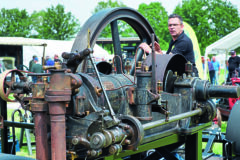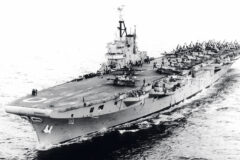How about a classic ULEZ city beater?
Posted by Chris Graham on 24th April 2023
Fancy a light commercial vehicle to own and use in a post-ULEZ city environment? Peter Simpson has a few suggestions.

As most of you are probably well aware, the London Ultra-Low Emission Zone is set to expand later this year, to cover pretty-much everything within the M25, meaning that owners of cars and light commercial vehicles which do not comply with the stringent emission rules have to pay at least £12.50 a day to drive within ‘the zone’ – for larger vehicles, the costs have been set much higher for some time.
Don’t assume that this is a purely-London issue either; Birmingham and Bristol already have similar schemes, Glasgow’s is coming in June, and Edinburgh, Aberdeen and Dundee have schemes that will start charging in 2024.
There is, though, one way around this, and one which is quite interesting for enthusiasts. If you choose a pre-1973 light commercial vehicle then, even if you want to use it commercially, you can do so – as the rules currently stand – and be completely exempt from all LEZ/ULEZ charges! This is one reason why so many of the ‘street food’ vans and so on one sees in London these days are classics! However, this applies only to pre-1973 historic vehicles though; younger historics (ie those that are post-1973 but still over 40 years old) are exempt only if not used commercially.
A well-presented and well-liveried pre-1973 classic can be fun to own and make an extremely eye-catching business advertisement. There are, of course, drawbacks to using such an old vehicle within a business; they aren’t as easy to drive, heating/ventilation systems aren’t as good and they use more fuel. They also need more looking-after and fettling, and it therefore helps a lot if whoever drives the van has some genuine enthusiasm and old-car sympathy.
Anyway, here are six suggestions of pre-1973 vans which might be worth thinking about.
Austin A30/A35 1956-68
The baby Austin vans ooze cheeky, period character. They’re also massive fun to drive; the late James Hunt certainly thought so and famously used one as his daily driver in his final years, though the part-mechanical braking system does need looking after or, better still, upgrading. The 60cu.ft loadspace isn’t massive, but it’s very loadable and accessible.
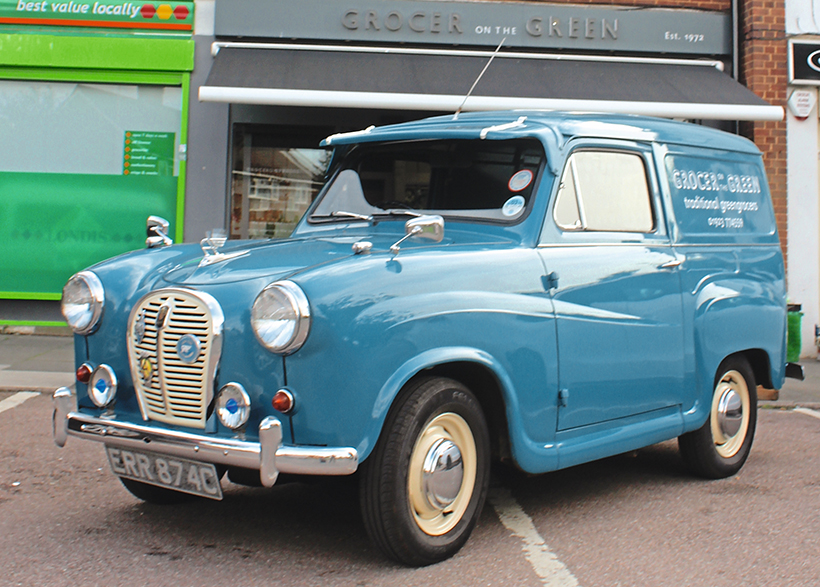
A35 vans lasted longer in production than the cars; the saloon finished in 1959, but the van was built up to February 1968. The 803cc A30 van was made for just two years, being replaced by the 948cc A35 in 1956. As well as the bigger engine, the A35 had a remote gearchange instead of the long, direct-acting and much less precise A30 arrangement. Then, in February 1962, flashing direction indicators finally replaced trafficators, wheel and grille colour standardised on Old English White and, in September, the 948cc engine was replaced by a 1,098cc along with a stronger gearbox and higher-ratio rear axle.
The 1,098cc van was the fastest standard A35 of all, with a reputed top speed was around 80mph. From September 1964, an 848cc engine was offered as an alternative. The choice lasted until May 1966, when the 1,098 version was dropped for the final two years.
These days the A30 is really one for the A30/A35 collector, the A35 is more plentiful and more useable. Mechanical parts availability is good, but body repairs generally require making good what you already have.
Rough £500-£1,000
Runner £4,000-£6,000
Good £12,000-£14,000
Morris 5-8cwt (Minor) van 1953-72
These are the most plentiful of the vans featured here; around 5,000 Minor vans and pick-ups survive worldwide from the 327,000 made. They’re also the easiest to own thanks to first-rate parts and specialist support; you can even buy a complete new chassis or glass-fibre van body. Minor vans are also fun to drive and, of course, are recognised and smiled at everywhere they go!
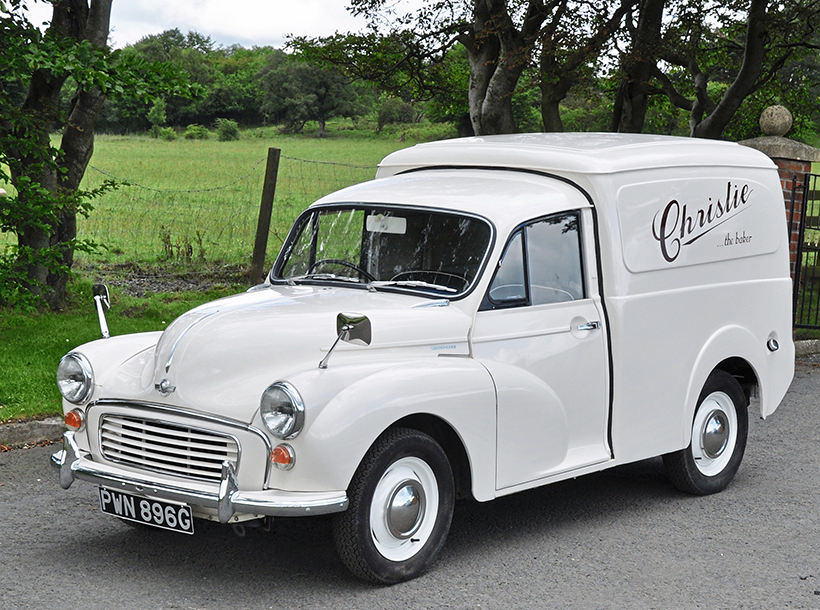
Initially, the vans had an 803cc A Series engine and 5cwt payload. The 948cc engine became an option from 1956 and then, in 1962, the 1,098cc engine replaced both and, at the same time, the payload was increased to 6cwt. In 1968, an 8cwt option was added with stronger suspension and wider tyres. About the same time, an Austin-badged version was introduced for sale through Austin-only dealerships following the end of A35 production. LCV production ended in February 1972.

Unlike the cars, Minor commercials have a separate chassis, with the cab and body bolted on. Pre-1956 commercials (split-windscreen) are rare and sought-after by collectors, and most people who simply want a classic van will probably opt for the more useable 1962-on 1,098 version.
Rough £2,000-£3,000
Runner £6,000-£9,000
Excellent £16,000+
Austin/Morris Half Ton (A55/A60) van and pick-up (1956-1972)
The BMC half-tonner is the largest vehicle under consideration here, with 110 cu.ft of space, and a full 10cwt payload. It also looks very ‘classic 1950s’; in fact, with its rather bulbous front-end, it’s almost a piece of shrunken 1950s Americana, and the bench seat and ‘four on the tree’ column gearchange add even more period character!

In truth, though, the ‘A60’ van was old-fashioned for most of its production life – BMC updated the car it was based on in 1959, but the commercials were essentially left alone, apart from a light-touch restyle plus a Morris-badged version and an engine up-power from 1,489 to 1,622cc in 1962. Little else, however, changed and, by the time it was replaced in 1972, the BMC half-tonner was positively ancient.
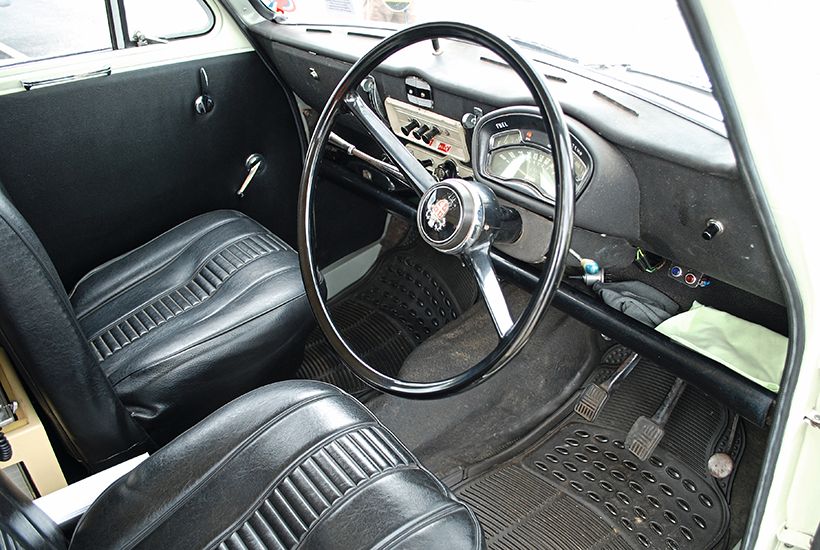
Tough and generally durable mechanically, these vehicles are fun to own and drive, and mechanical parts availability is generally good. Maintenance is straightforward, with the notable exceptions of oil filter changes and distributor servicing.
Rough £1,000-£1,500
Runner £4,000-£8,000
Excellent £12,000+
Bedford HA 1964-83
Bedford’s light commercial was based on the HA Viva saloon which was introduced in 1962, but the van version lasted right up to the mid-1980s, though it did inherit some of the mechanical upgrades applied to later Vivas – specifically the engine went from the original 1,057cc up to 1,256cc, and suspension and rear axles were progressively upgraded to suit payload increases from 6cwt to 8cwt and, ultimately, 10cwt. Loadspace was 70cu.ft.
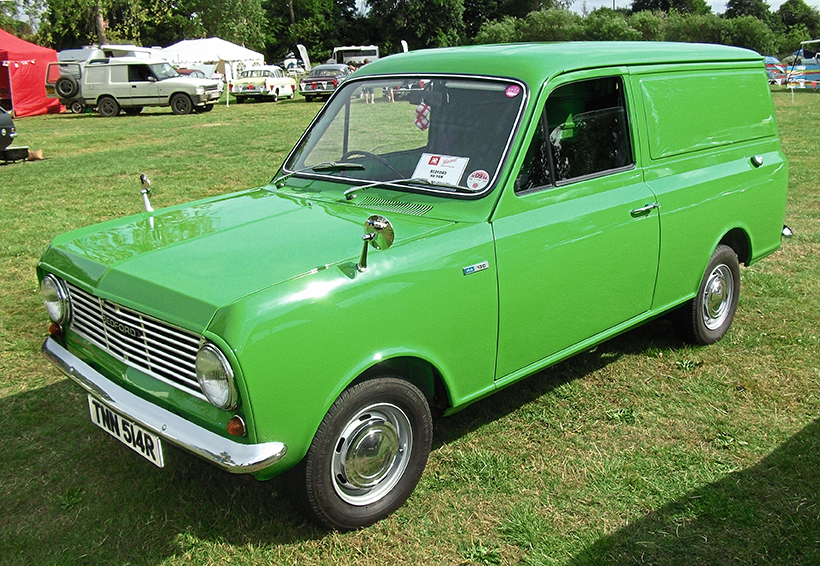
When introduced, the HA’s spec was quite modern; light rack and pinion steering and a nice, positive short-lever, four-speed all-synchro gearbox made it pleasant to drive. Lightweight construction also made the HA economical. Many large fleets – including the Post Office and public utilities – bought the HA vans in bulk, but they appealed equally to one-off buyers such as shopkeepers and tradesmen.

In later life, however, the lightweight construction became something of a drawback, as rust became an issue, and the vans passed to subsequent owners who were more inclined to overload and generally abuse them. Consequently, decent survivors are now rare, and there are also some parts supply issues, though the specialist suppliers are by and large excellent.
Rough £1,000-£1,500
Runner £3,000-£7,000
Excellent £10,000-£15,000+
BMC Mini van 1961-1982
After black cabs and red buses, there aren’t many vehicles that epitomise swinging-sixties London better than a proper, original BMC or BL-made Mini, and the 5cwt van version, made from 1961 until 1982, is actually a pretty good choice for a ULEZ-free city commercial.
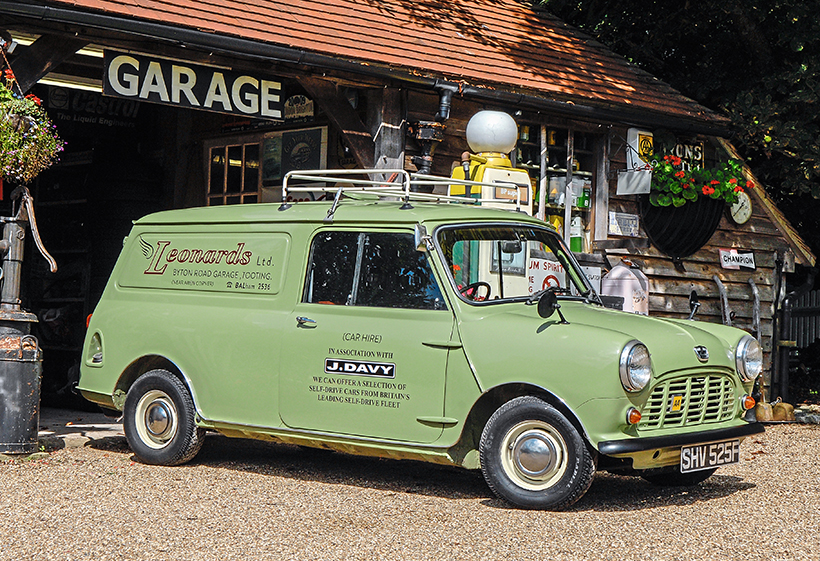
Parts back-up is second to none, they’re fun to drive and the FWD layout gives a lovely, low loadspace that’s dead-easy to access. And if modification is your thing, there’s a massive range of options to improve performance and/or make your van stand out even more from the crowd.
In fact, it’s quite hard to think of any downsides. Obviously, 46cu.ft means you won’t get as much into a Mini as you will some of other vans under consideration here but, if you don’t actually need more than a Mini gives, any extra is simply wasted space…
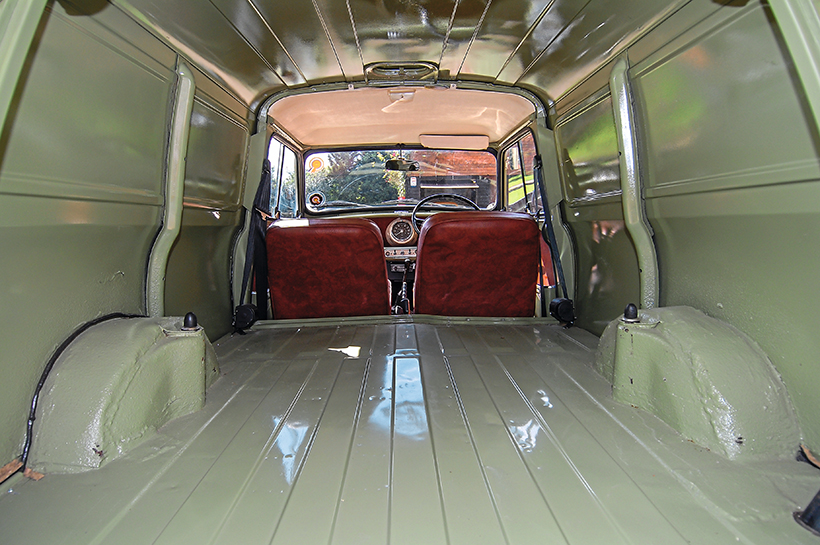
The only other drawback is that a decent Mini van will cost you more than any of the other vans featured here – vans are popular with Mini enthusiasts. But, once bought, a good example is highly unlikely to lose value unless it’s really neglected.
Rough £3,000-£4,000
Runner £8,000-£12,000
Excellent £20,000+
Ford Escort Mk1 van 1968-73
The Escort replaced the Anglia from early 1968, and the vans changed over at roughly the same time, with a 6wt and 8cwt version available and a choice of 1,098 or 1,298cc power. The Escort van was an extremely attractive package overall – to the back of the cab it was pure Escort car, and that was bang up to date! The 1300 vans came with disc front brakes, and there was even a Borg-Warner 35 auto option, though I’ve never seen one and I’ll be staggered if any survive…
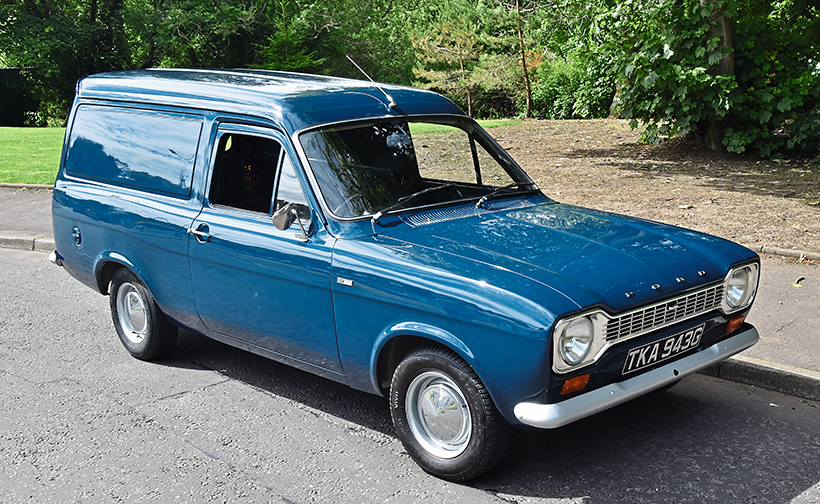
A mid-life facelift in 1972 bought many cab trim upgrades, including custom pack options giving luxury akin to the XL saloons.
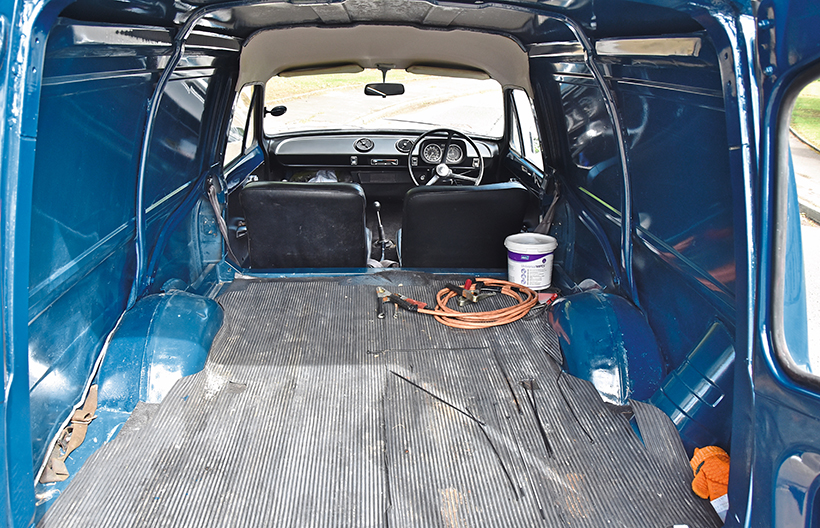
Today, Mk1 Escorts are among the most sought-after 1960s Fords of all, and the vans are no exception. They are also scarce, and may not be sensible for everyday use. Of all the vehicles under consideration, though, a Mk1 Escort is probably the easiest and most modern-feeling to drive, and that might be a big advantage in some circumstances.
Rough £2,000-£3,000
Runner £7,000-£10,000
Excellent £15,000+
LIGHT VAN BUYING GUIDE
As with cars, bodywork condition is crucial, and most replacement panels are extremely scarce, though sometimes you can buy ready-made repair sections for the most common rot-spots. However, in most cases you’ll need to repair what you already have or, if that’s too far gone, find a better secondhand alternative – although that’ll almost certainly also need work, too.
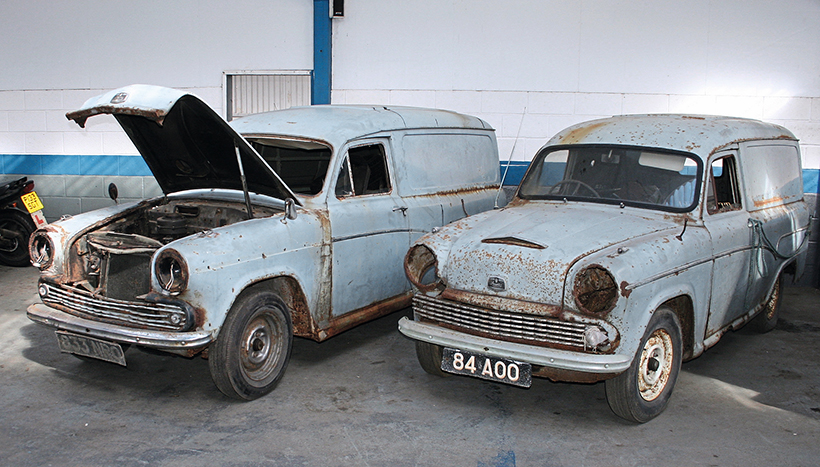
Common rot spots on most vans include the load floor at the back and around the wheelarches, cab floor and steps, and the lower sections of the main external panelwork, though this is generally formed from flat sections and so is relatively easy to repair.
With most vans, the roof guttering condition is critical to the vehicle’s viability. Rust here may look like a minor issue, but it’s extremely difficult and time-consuming to repair properly.
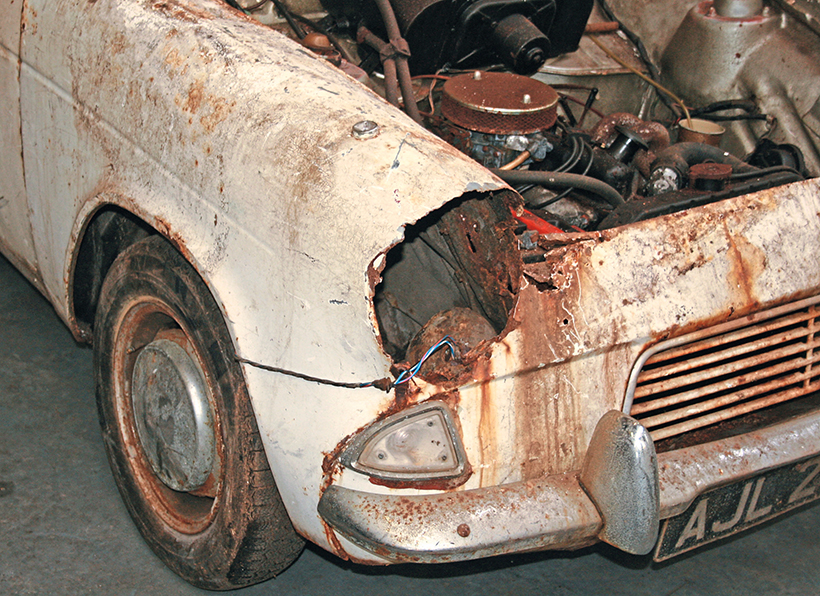
Van cab trim tends to be basic – rubber mats rather than carpets, for example – but it’s also harder to replicate.
Many vans are imported from warm/dry places like Malta, South Africa and so on, where more survive, and they are usually less rusty. They will, however, have had long working lives and lots of minor body damage is commonplace, along with worn/bodged mechanicals. Rot-free definitely dies not equate to problem-free!
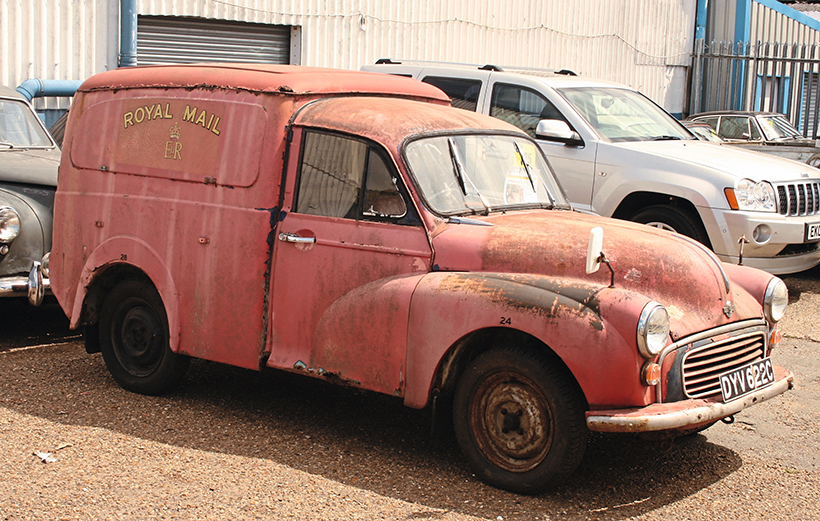
This feature comes from the latest issue of Classic & Vintage Commercials, and you can get a money-saving subscription to the magazine simply by clicking HERE



